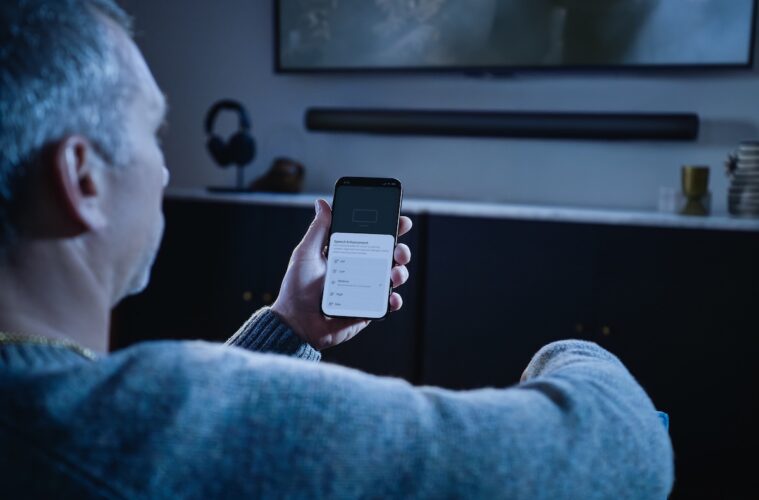Sonos has introduced a new Speech Enhancement feature – a software tool that lets listeners tune their content to their precise needs and fully immerse into their favourite shows and films.
Using AI to detect and clarify dialogue – and developed with RNID (Royal National Institute for Deaf People) to incorporate valuable perspectives of those with hearing loss – Speech Enhancement provides four levels of control that empower viewers to create a customised sound experience.
Dialogue in films has become increasingly harder to understand, which can make the viewing experience difficult to follow. While subtitles, volume control and Bluetooth headsets can help, Sonos wanted to help solve this problem and provide a better way to listen.
Sonos also worked with award-winning film sound mixer Chris Jenkins to tune the tool so it not only clarifies dialogue, but also retains the artistry of movie moments like action scenes and music montages.
The new Speech Enhancement feature is part of Sonos’ commitment to inclusive design and consistently reinventing its products to be more equitable and accessible for all. It will be available to use on Sonos’ Arc Ultra soundbar via a software update rolling out today.
Matt Benatan, Principal Research Scientist at Sonos, says, “It’s not just practical, it’s emotional. One of the most important aspects of TV and movie-watching is the opportunity to bond over cultural and entertainment events that are watched in real time. If one viewer cannot fully hear the dialogue, their ability to enjoy and participate in the moment can be lost.”
While TV soundbars have offered basic speech enhancement for years, they often lacked the effectiveness and sound quality needed to truly solve the problem.
“By implementing machine learning into our speech extraction technology, we figured out how to separate dialogue from other sounds in the centre channel and clarify speech in real time,” adds Harry Jones, Sound Experience Engineer at Sonos. “This lets us draw out just the dialogue at the most needed times, without overly impacting volume or taking away from the holistic cinematic experience.”
The result is a dynamic Speech Enhancement tool with four different levels to choose from – the highest of which is expressly designed for those with hearing loss – via the Sonos app home screen:
- Low – A subtle, artistic nudge that emphasises dialogue while maintaining the original experience and creator intent.
- Medium – A medium enhancement that provides better dialogue clarity and a tasteful balance of the surrounding mix elements.
- High – A higher setting that makes dialogue obviously prominent while reducing other mix elements.
- Max – The most pronounced setting where dialogue clarity takes full priority, designed for those with hearing loss. Unlike the more balanced approach of Low, Medium and High levels, Max level further controls the dynamic range of non-speech elements, placing dialogue firmly at the forefront of the experience.
In working with RNID, Sonos collaborated with 37 participants of various ages and hearing abilities to gather their detailed everyday listening experiences and test the feature across a range of content types for nearly a year.
“We wanted to ensure that Speech Enhancement would work for all, even those who might not even realise they have hearing loss,” says Lauren Ward, Lead RNID Researcher. “One in three adults in the UK experience hearing loss, and it is reported that just under one in four adults in the USA do too. This tool has the potential to impact a large number of people.”
“Sonos’ new Speech Enhancement feature is a huge step forward in addressing dialogue challenges that come with the breadth of content available to people today,” says Chris – sound mixer. “It’s also a testament to the importance of retaining human touch when building with AI – there were countless hours of listening sessions where we worked through the details together, adjusting each setting to make sure it delicately enhances dialogue while remaining true to the creator’s intent.”
“When creating Speech Enhancement, we knew we wanted to put the perspective of people with hearing loss front and centre from the earliest development stages,” adds Matt. “What we learned from RNID researchers and participants perfectly complemented input from Chris Jenkins, allowing us to consider a broader range of listener perspectives. It has been an incredible collaboration, and we’re grateful for their expertise and time in developing this experience together.”


